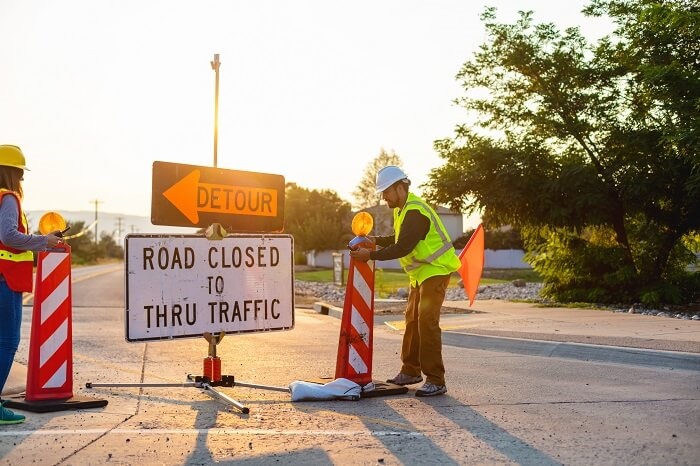Speeding Makes Work Zones Dangerous for Everyone
In work zones, fatalities have increased an astounding 63% since 2010.
In work zones, fatalities have increased an astounding 63% since 2010.

Did you know that the chances of survival for a person who is hit by a car vary depending on the speed at which the car is traveling? At 20 mph, the person has a 90% chance of surviving the impact. However, if the car is traveling at 30 mph, the chance of survival drops to 60%. Similarly, at 40 mph, the person hit by the car only has a 20% chance of surviving.
According to NSC analysis of NHTSA crash data, almost 30% of all fatal crashes in 2021 were speeding-related, the third consecutive year of increasing speeding-related deaths. In work zones, which are sections of roadways with construction, maintenance or utility work, fatalities have increased an astounding 63% since 2010.
While drivers tend to decrease their speed in work zones, studies have shown they often do not reduce their speed to the posted limit. Multiple factors contribute to this behavior, including traffic delays, weather conditions, lighting and work zone signage that remains posted even when no workers are present.
So, the question remains: How can we reduce speeding in work zones and keep workers safe?
Variable speed limits (VSLs) are one effective way to ensure that drivers follow work zone speed limits. These limits can be adjusted based on various factors such as weather conditions or traffic volumes. The Ohio Department of Transportation reports that VSLs have helped to reduce crash rates by over 35% in seven years in areas where they were implemented on a portion of I-9.
Electronic speed feedback signs are another effective tool to help drivers reduce their speed. These signs display the speed at which the driver is traveling and remind them of the posted speed limit, often by flashing lights or displaying messages like "slow down." According to a study conducted by the Midwest Smart Work Zone Deployment Initiative, using speed feedback signs can lead to a reduction of about 5 mph in speed in areas where they are used. It's worth noting that, according to FHWA, even a modest reduction of 1 mph in speed can decrease the number of injury crashes by 5%.
Flashing LED signs and radar are also used to warn drivers of upcoming work zones. These devices are known as Active Work Zone Awareness Devices (AWADs) and display messages like “Speeding Fines Doubled” or “Workers Ahead.” According to the USDOT, a pilot program of Smart Work Zone technology in active work zones in Florida, which included AWADs, helped to increase safe driving behavior by 43% and reduce risky behavior by 43%.
Ensuring safety in work zones is a complex issue, but with the emergence of new technologies there is hope to reduce speed-related crashes in and around these areas. As responsible drivers, we should all follow regulatory and safety roadway messages and remain alert to changing traffic conditions. To contribute to road safety for all users, take the NSC Just Drive pledge to avoid distractions while driving, including in work zones. Additionally, you can get free materials for Distracted Driving Awareness Month at nsc.org/JustDrive.
With a century-long legacy, the National Safety Council is a global center for safety expertise. Let's work together to align resources. We look forward to learning about ways we can join efforts to expand safety everywhere!
There are no items in your cart